The Dark Secret Of The Vatican Pagan Gods (2)
By Korben Dallas
Read the first part of the article
Papal Tombs
What could be a better way to determine whether polytheistic religions were present in the 15th-18th century Rome other than the remaining physical evidence. And what could be a better reflection of the life paths of the Popes other than their burial tombs.
Pope Gregory XIII
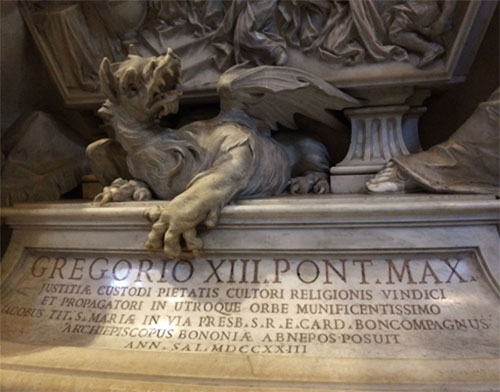
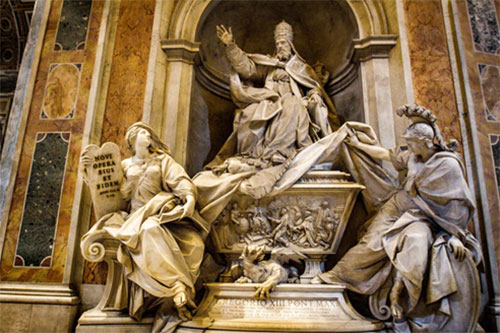
Somehow we have Minerva incorporated into Gregory XIII’s tomb. Why would a Christian leader who died in 1585 have this Roman goddess on his tomb? We are talking about a pagan goddess on the tombstone of the Pope! Possible the one on the left is Clio the Muse.
Pope Leo XI
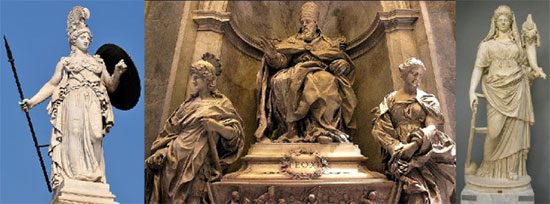
Minerva (left), Pope Leo XI’s tomb (center) and Fortune (right)
He died in 1605. How come the Pope of Rome has Roman goddesses Minerva and Fortune on his tomb? And why did they break Minerva’s spear? Where is the second half, or was it meant to make the ridiculousness less obvious? What does any of this have to do with the Pope of Rome and Christianity?
All this pagan symbology at the heart of the Roman Catholic Church (Vatican) with Roman Inquisition running rampant makes how much sense? Zero?
Pope Julius III: Coat of Arms
Pope Julius III (1487 – 1555), born Giovanni Maria Ciocchi del Monte, was head of the Catholic Church and ruler of the Papal States from 1550 to his death in 1555. Allegedly the depiction below of the Christian Pope’s coat of arms was influenced by Michelangelo. How did the Roman Inquisition allow two naked men to hold Saint Peter’s Keys of Heaven?
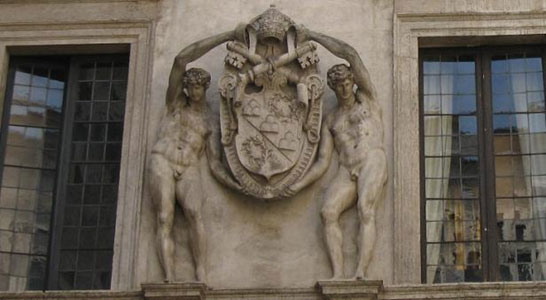
The Triton Fountain
The Triton Fountain is a seventeenth-century fountain in Rome, by the Baroque sculptor Gian Lorenzo Bernini. Commissioned by his patron, Pope Urban VIII, the fountain is located in the Piazza Barberini, near the entrance to the Palazzo Barberini that Bernini helped to design and construct for the Barberini, Urban’s family.
The fountain was executed in travertine in 1642–43. At its centre rises a larger than lifesize muscular Triton, a minor sea god of ancient Greco-Roman legend, depicted as a merman kneeling on the sum of four dolphin tailfins. His head is thrown back and his arms raise a conch to his lips; from it a jet of water spurts, formerly rising dramatically higher than it does today. The fountain has a base of four dolphins that entwine the papal tiara with crossed keys and the heraldic Barberini bees in their scaly tails.
Triton is a Greek god, the messenger of the sea. He is the son of Poseidon and Amphitrite, god and goddess of the sea respectively, and is herald for his father. He is usually represented as a merman which has the upper body of a human and the tail, soft dorsal fin, spiny dorsal fin, anal fin, pelvic fins and caudal fin of a fish, “sea-hued”, according to Ovid “his shoulders barnacled with sea-shells”.
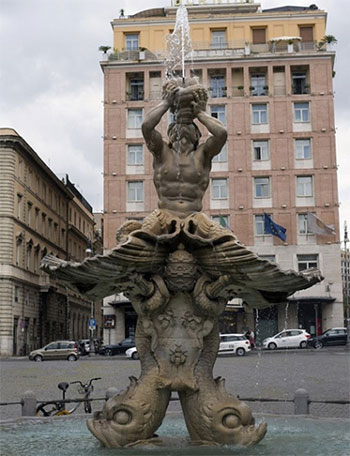
So, what do we have going on here? On one hand Inquisition was allegedly fighting heresy, on the other hand Vatican was promoting the religion of the Ancient Romans and Greeks? The same religion which supposedly died off over a thousand years ago?
Renaissance Art
Renaissance art is the painting, sculpture and decorative arts of the period of European history, emerging as a distinct style in Italy in about 1400, in parallel with developments which occurred in philosophy, literature, music, and science.
“Renaissance art, perceived as the noblest of ancient traditions, took as its foundation the art of Classical antiquity, but transformed that tradition by absorbing recent developments in the art of Northern Europe and by applying contemporary scientific knowledge. Renaissance art, with Renaissance Humanist philosophy, spread throughout Europe, affecting both artists and their patrons with the development of new techniques and new artistic sensibilities. Renaissance art marks the transition of Europe from the medieval period to the Early Modern age.” The images on the pertaining Wikipedia page are so supportive of the narrative. What about the other type of images?
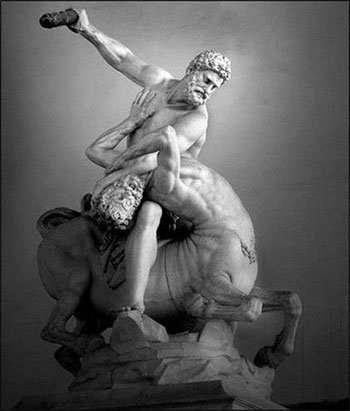
Hercules and the Centaur Nessus (1599)
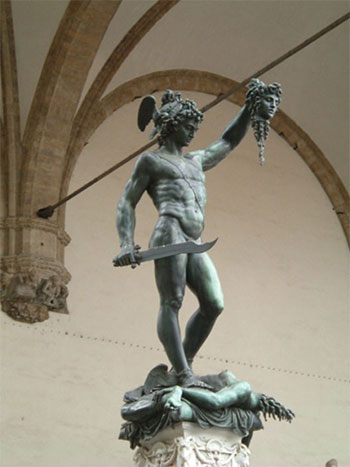
Perseus With the Head of Medusa (1545-1554)
You really need to know the difference, for the narrative insists that there was a break in time between the Ancient Rome and the Holy Roman Empire.
Cosimo I de’ Medici
Cosimo I de’ Medici (1519 – 1574) was the second Duke of Florence from 1537 until 1569, when he became the first Grand Duke of Tuscany, a title he held until his death.
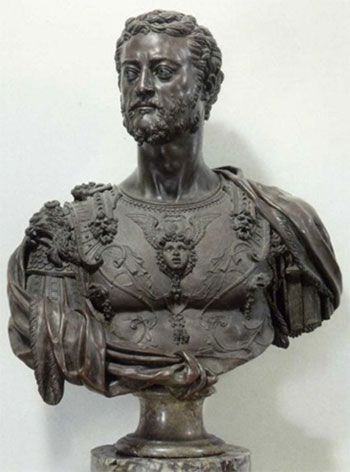
Right, what can be better than depicting one of the most powerful Christian men of the time with the winged head of Medusa on his chest, and wearing Ancient Roman attire 1,000 years after its fall? I guess the Roman Inquisition did not mind little acts of heresy like this.
Etruria
What else do we call Tuscany? Right, we call it Etruria. And never mind that Etruria was non-existent since about 509 BC, for: “The Grand Duchy of Tuscany (which existed 1569–1801 and 1814–1859) styled itself in Latin as Magnus Ducatus Etruriae (Grand Duchy of Etruria). The name Etruria was also applied to the Kingdom of Etruria, an ephemeral client state of Napoleon I of France which replaced the Grand Duchy between 1801 and 1807.”
Isn’t it amazing that 2,000 years after the fall of Etruria they simply brought back the name? “Let’s call ourselves Etruscans from now on”, they said. Well, maybe they did not say that, but the narrative compilers sure did. One way, or the other, but those Medici were serious about their Etruria.
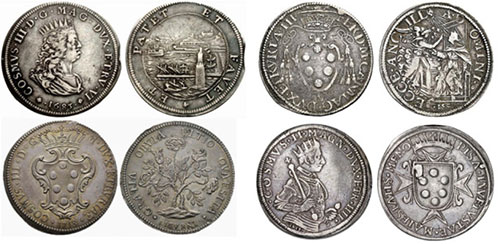
The Etruscan Language somehow made it onto the Europa Polyglotta map. Of course, we are told that some of those languages are ancient.
Below is the Europa Polyglotta, published in 1730 by Gottfried Hensel (or Henselius, after the contemporary fasion of latinising surnames). Its full title, translated from Latin: Multilingual Europe, showing the genealogy of the languages, together with the alphabets and modes of writing of all peoples.
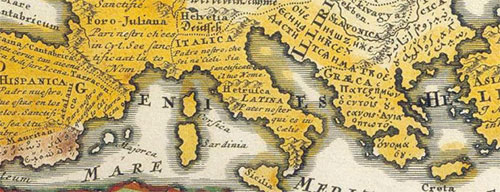
The Pantheon
They tell us: “The Pantheon (from Greek Πάνθειον Pantheion, ‘[temple] of all the gods’) is a former Roman temple, now a church, in Rome, Italy, on the site of an earlier temple commissioned by Marcus Agrippa during the reign of Augustus (27 BC – 14 AD). It was completed by the emperor Hadrian and probably dedicated about 126 AD. Its date of construction is uncertain, because Hadrian chose not to inscribe the new temple but rather to retain the inscription of Agrippa’s older temple, which had burned down.”
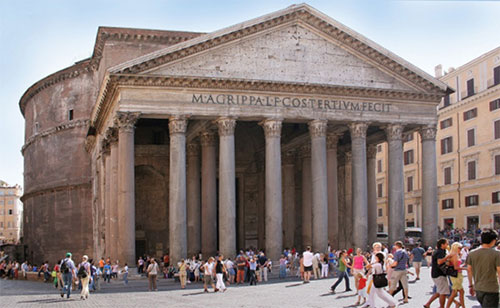
We are being told that this “temple of all the gods” was completed by the Emperor Hadrian who died in 138 AD. But do they explain what “all the gods” mean? As a matter of fact they do, also on Wikipedia: “The Roman had their traditional ceremonies and they worshiped Roman gods as well as gods from other provinces and city states. […] Romans worshiped gods from Babylon, Persia, Europe and Egypt. Those stationed in remote provinces often worshiped local gods.”
This meant that Pantheon was for all the gods. This would include the Christian God as well. Additionally we need to remember that the word “catholic” from Greek “katholikos” means universal.
Raphael
“Raphael (1483 – 1520) was an Italian painter and architect of the High Renaissance. His work is admired for its clarity of form, ease of composition, and visual achievement of the Neoplatonic ideal of human grandeur. Together with Michelangelo and Leonardo da Vinci, he forms the traditional trinity of great masters of that period.” – Wikipedia.
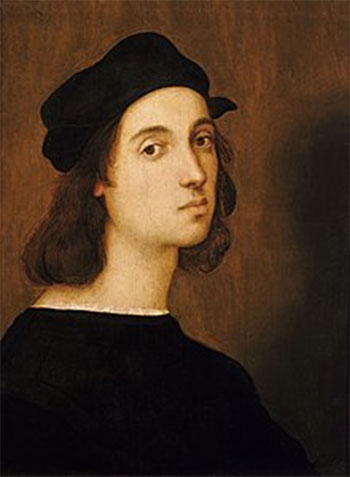
Presumed portrait of Raphael
Who thinks that Raphael was Christian? The narrative probably says that he was. Why does it matter? Well, where is he buried at? Coincidentally his tomb is in the Pantheon. As a matter of fact, he, allegedly, was the first person to be buried in the Pantheon.
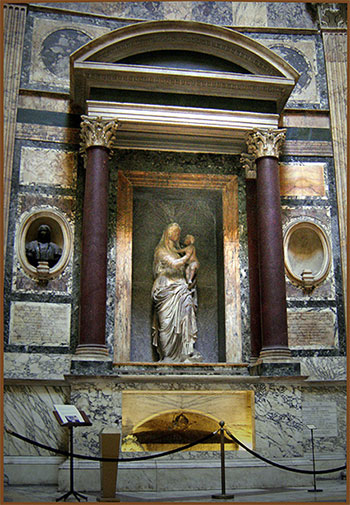
Why wouldn’t they put his tomb in the Pantheon? Raphael was, with no fear, creating the art promoting paganism during the time of the Roman Inquisition.
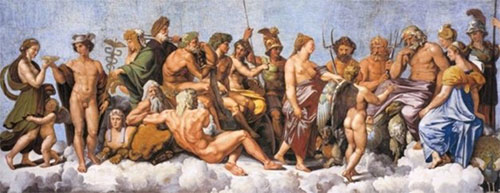
The gods of Olympus by Raphael
Most importantly Raphael was not the only one promoting paganism at the time of the Roman Inquisition. A whole bunch of others did as well. Well, when even the Christian Pope himself participated in the promotion of the paganism, we cannot really blame them, can we?
The Christian Rome
So, when did Vatican and Rome become Christian? Well, the last time Gargoyles and Chimeras were added to the Notre-Dame de Paris Cathedral was around 1844. The fact that the cathedral is located in France is irrelevant. It still falls under the rule of the Vatican.
At the same time the correct answer for the above question would probably be – never. It’s only Christian for us, normal slave-type regular folks. For those “in the know” the Vatican has always been pagan.
Who Is The Roman Catholic Church Really Worshiping?
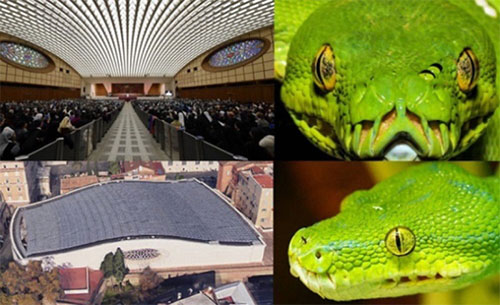
The Pope Hall
The Paul VI Audience Hall is a building in Rome named for Pope Paul VI with a seating capacity of 6300, designed in reinforced concrete by the Italian architect Pier Luigi Nervi and completed in 1971. It was constructed on land donated by the Knights of Columbus.
Look at the details in the photo below. That, according to the artist Pericle Fazzini, is Jesus Christ rising up from a nuclear crater following a holocaust. The sculpture was commissioned in 1965 by Count Galeassi and was meant to depict the threat of nuclear war in the 20th Century. The problem for a lot of conspiracy theorists is that the sculpture, like the entire hall, contains no Christian symbolism.
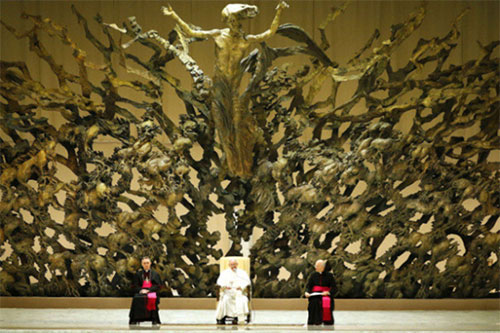
We were fooled into thinking that the Ancient Roman period and the Holy Roman Empire were separated by the Dark Ages. In my opinion, these two are one and the same. The Renaissance infatuation with antiquity makes no sense, and was created to hide the fact that there was only one period. The powers that be had to make two out of one, but could not conceal all the physical evidence (statues, buildings, art, etc).
This is why we have statues like the three below. The compilation has three well known historical individuals wearing the Ancient Roman togas:
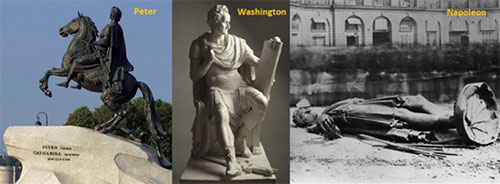
The narrative tells us that the Antiquity was simply popular “back then”. “Move along people, for there is nothing special to see here,” said TPTB.
Why did the elite have to artificially extend our history? At this moment I think because of the reoccurring “catastrophes”. The most recent one occurred some time around 1850s. If those take place on a regular basis with an interval of 250-500 years, this world is better off thinking that dinosaurs roamed the Earth millions of years ago, and that Pompeii got wiped out in 79 AD instead of 1631. Nobody needs no panic, I could see that.
I put the word catastrophe inside the quotation marks, because we do not really know what it means. Could human harvesting be a part of this word? I think it could.
At the same time I consider that those Pagan gods are still out there, and the Vatican is Christian only to us, but in reality it does not worship God.
yogaesoteric
April 9, 2020
